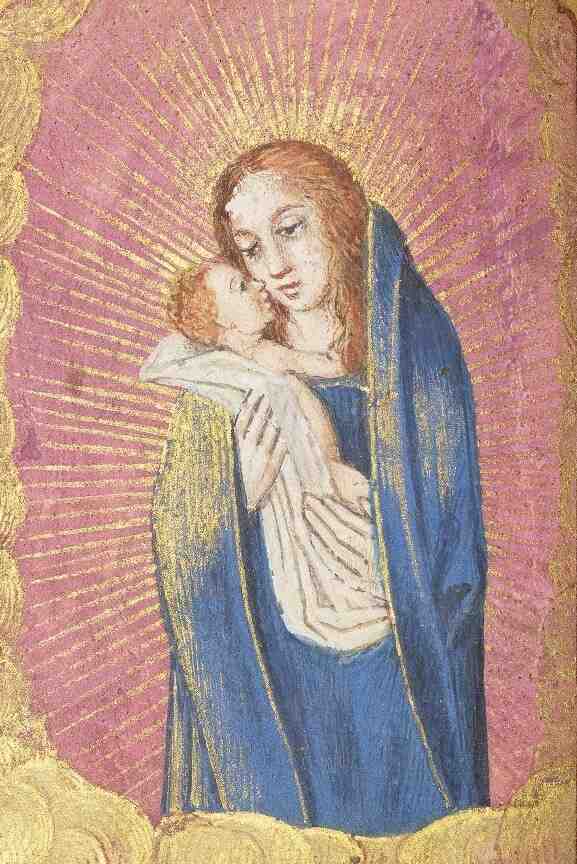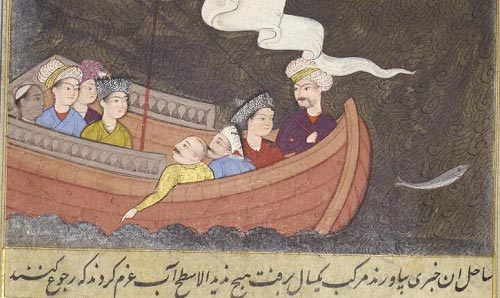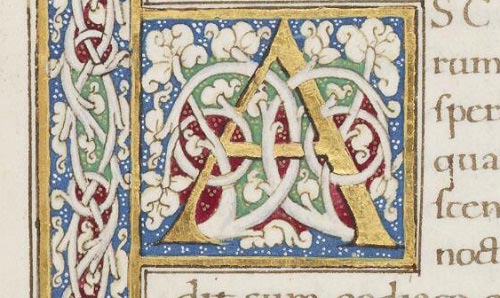
Western European Manuscript Collections
The word manuscript has its roots in the Latin manu scriptus, which translates as ‘written by hand’.

The term covers material produced before the arrival of printing in Europe in the 15th century but also after, as the practice of manuscript production did not disappear with this development. Manuscripts appear in numerous physical formats, including but not limited to tablets, scrolls, rolls and in book form (often referred to as a codex). Materials that manuscripts appear on include clay tablets, papyrus, linen, parchment, paper, wood, palm leaf, bone, bamboo and bark.
The Library's manuscript collections cover more than fifty languages, including all the major European and Middle Eastern languages, and numerous Far Eastern ones. They span five millennia and the subject range is vast, encompassing literary, historical, antiquarian, genealogical, biblical, devotional, ritualistic, medical, scientific, legal and administrative texts. The majority of manuscripts were acquired in 1901 when Enriqueta Rylands purchased the manuscript portion of the Bibliotheca Lindesiana, the remarkable library developed by the 25th and 26th earls of Crawford. Our Western manuscript collections are generally organised by language, following the arrangement established by the earls of Crawford. In some cases, this classification is under the majority language as a number of manuscripts contain more than one.
Among the Western manuscripts are over 500 medieval codices, including outstanding examples of calligraphy and illumination in books of hours, psalters and other devotional works.
Latin manuscripts
Ranging in date from the 7th to the 19th centuries, the Latinmanuscripts are of outstanding importance both textually and for their illumination. Most of the major monastic centres of manuscript production are represented in the collection, including Bremen, Erfurt, Essen, Luxeuil, Murbach, Trier and Weissenau, but there are also numerous examples of the later output of secular workshops. Outstanding examples in the Latin Collection include the magnificent manuscript of the Commentary on the Apocalypse by Beatus of Liébana (Latin MS 8); the beautiful Gospels of the Emperor Otto III, dated around 1000 (Latin MS 98); and the magnificent Missal of Henry of Chichester, executed in the scriptorium of Salisbury Cathedral c.1240–60 (Latin MS 24).
English manuscripts
Our English manuscripts comprised over 1,500 collections or individual codex items. They date from the 14th century onwards and include 41 Middle English manuscripts. Notable Middle English texts include a richly-illuminated copy of John Lydgate’s Troy Book from the mid-15th century and a very extensive collection of manuscripts of the Wycliffite Bible or of parts of the Bible, written in the late 14th and 15th centuries (English MSS 3, 75-92).
Within the collection are also numerous examples of historical, biblical, devotional, literary and genealogical texts, plus collections of letters and papers relating to military, political, industrial, social and local history, literature, art, and the history of Dissent.
French manuscripts
Ranging from the 13th to 19th centuries, the French manuscripts comprise of Biblical, devotional, literary, historical, legal and genealogical works, many of which are pre- 16th century. In addition, there is 17th- and 18th- century correspondence that sheds light on the social and political history of France in the reign of Louis XIV and newsletters, or 'gazettes manuscrites', and other records relating to the French Revolution.
Italian manuscripts
The collection of Italian manuscripts contains significant literary, historical, genealogical and musical works, including four manuscripts of Dante’s Divina Commedia. There are also documents concerning Florence, Venice, Bologna and other cities, and records relating to the Medici, Strozzi and Orsini families.
German manuscripts
The collection of German manuscripts comprises mainly devotional, historical, alchemical and genealogical works, including the wonderful Deutsches Stammbuch, which contains over 1,800 emblazoned coats of arms of nobilities and dignities of the Empire, recently identified as being produced in the workshop of Lucas Cranach the younger in 1565/6 (German MS 2).
Greek manuscripts
Our Greek manuscripts are some of our oldest manuscript materials, ranging from the 3rd century BCE to the 19th century. The collection includes 31 ostraca, 54 codices and some 2,000 papyri. The codices, ranging from the 10th to the 19th centuries, are mostly biblical and devotional volumes.
Irish manuscripts
We have over 130 Irish manuscripts. The sole 15th-century manuscript is a valuable Materia Medica, based on Latin herbal dictionaries (Irish MS 35). The rest of the collection consists primarily of literary, historical, genealogical and grammatical works from the library of the Irish scholar Denis Henry Kelly (1797–1877) purchased by the 25th Earl of Crawford at the Denis H. Kelly sale in Dublin in 1875.
Other manuscripts
Finally, there are also smaller collections of Dutch, Icelandic and Spanish manuscripts along with many original bindings, medieval jewelled book covers, and ivory carvings.
List of collections
Physical collections
- Crawford Collection
- Dutch Manuscripts
- English Manuscripts
- French Manuscripts
- German Manuscripts
- Greek Manuscripts
- Hebrew Manuscripts
- Icelandic Manuscripts
- Irish Manuscripts
- Italian Manuscripts
- Latin Manuscripts
- Spanish Manuscripts
Digital collections
- Hebrew Manuscripts in Manchester Digital Collections
- Middle English Manuscripts in Manchester Digital Collections
- Latin Manuscripts in Manchester Digital Collections
- Papyrus to Print: Manuscripts in Manchester Digital Collections
- Papyrus to Print: Text and Image in Manchester Digital Collections

Exploring subject areas
An overview of our Special Collections, including information about the background and history of our holdings.

Special Collections A-Z
Explore the Special Collections through the collection names and descriptions using our searchable A-Z tool.
